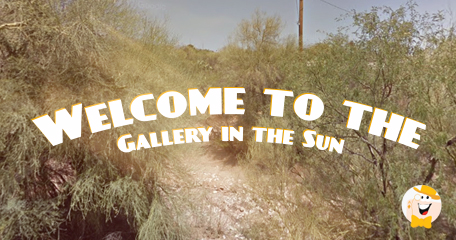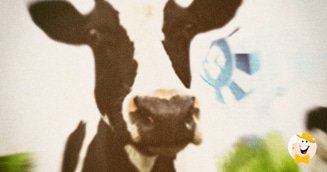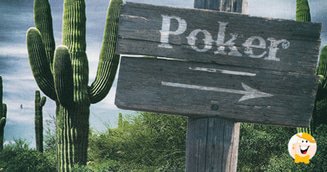
In the early 1970s, I was a gadabout journalist and aspiring magazine writer living in Phoenix, AZ. My dream like most wanna be authors was to write the great American novel and have it made into a movie.
I was working as a reporter for a small weekly newspaper. Paul DeGruccio, a photographer for the weekly, came by my desk one morning with a story idea.
'You're always interested in off-beat characters,' he said, sitting on my desk. 'How'd you like to meet an artist who is going to burn a million dollars worth of paintings?'
The artist's name was Ted DeGrazia and he lived in Tucson where he operated the Gallery in the Sun. Paul had met him while visiting Tucson with his wife, Barbara, and they became friends.
'He's a little eccentric but he's very talented,' Paul said. 'His gallery even includes an adobe mission he built and dedicated to Father Kino, a Jesuit Priest.'
'Why is he going to burn a million dollars worth of paintings?'
'It's a protest. He says the federal inheritance tax is unfair to artists and he wants the law changed. Anyhow, he's planning to take the paintings on horseback into the Superstition Mountains and set them on fire rather than let them fall into the hands of the I.R.S. That's what would happen if he died and his heirs couldn't afford to pay taxes on the paintings.'
That was how I met DeGrazia. I was Arizona Correspondent for People Magazine at the time and my editor Hal Wingo thought the burning of the paintings would make a good story.
Paul and I set up a meeting with DeGrazia for the following Saturday. During the two-hour drive to Tucson, he told me some of the artist's background. DeGrazia, the son of Italian immigrants, was born in Morenci, AZ. when Arizona was still a Territory. His father was a copper miner and when Phelps Dodge closed the mine in 1920, his family moved back to Italy where they stayed five years until the mine re-opened.

While in Italy Ted became fascinated by Cathedral art and began doing paintings of the Catholic churches. After returning to Arizona, he continued painting and did ceramics, sculptural work, and other art forms. One of his pieces of art was the face of Christ. He made it out of clay and baked it in his mother's oven.
The gallery and mission were located at 6300 N. Swan Road. DeGrazia greeted us at the door of the gallery. He wore denims, scuffed leather boots, and a cowboy hat. He had a Hemingway beard and a gold tooth that glinted in the sun.
'So here's the writer whose going to make me famous,' he said, shaking my hand. 'Welcome to the Gallery in the Sun.'
We spent that morning talking about his artwork. DeGrazia had painted the Stations of the Cross for the St. Thomas More Catholic Newman Center at the University of Arizona in Tucson. He had also done many paintings of Father Kino that were published in a book by the Arizona Historical Society. A copy of the book was sent to the Vatican in 1961 and the Holy See responded with a blessing from the Pope.
I asked him about the mission.
'I built it in 1952,' he said. 'It's a place to remember, a place where people begin to believe.' He said he didn't build it for just Catholics or Christians, but for everybody.
As we enjoyed the morning, Ted invited us to lunch at Rosita's, a small Mexican restaurant near the gallery. While we were sampling Rosita's excellent cuisine, I asked him about his spiritual beliegs. He said he was Catholic and that one of his passions was to paint religion in its many forms.
I asked him to tell me his thoughts about God.
Ted smiled. 'God can rock you in his arms like a child or He can drown you in blood at the end of the universe,' he said. 'He is God. Next question?'
DeGrazia's art career received a major boost when he traveled to Mexico and met master muralist Diego Rivera, who accepted him for an internship. He also studied under Jose Clemente Orozco and held several art shows under their sponsorship at the Palacio de Bello Arte.
His wife was a New York sculptor named Marion Shret and some of her work was included in the gallery.
Before I headed back to Phoenix, I promised DeGrazia I would go on his trip into the Superstitions for the burning of the paintings. We made the journey by horseback in 1976 and recorded the burning. My story appeared in People Magazine and Ted was invited to New York to be interviewed on the 'Today' show.
Tucson had a gambling casino called the Desert Diamond. It had a great poker room and that night I visited the place and tried my luck. I won over $300 and made a note that I would return to its friendly atmosphere. Over the years I met with DeGrazia and his good artist friend Shorty Thorn half a dozen times and never failed to go to the Desert Diamond for some good poker action.
DeGrazia's artwork was highly regarded in the Tucson area where the players and poker executives were always interested in the stories I told them about Ted. One of the stories was about a Pima Indian who wanted to borrow money from DeGrazia. Ted asked him how much he needed and the Indian said thirty dollars.
DeGrazia told him to go in his backyard and dig a hole in the ground.
'How deep, Ted?,' the Pima asked.
'Oh, about thirty dollars worth,' the artist said.
Later when another Indian wanted to borrow money from DeGrazia, he had him fill the hole the Indian had dug.
As a result of the fiery protest, Sen. Barry Goldwater, a friend of DeGrazia's and a collector of his paintings, introduced a new bill that changed the federal inheritance tax law to make it more favorable to artists.
DeGrazia was considered the most reproduced artist in America. His oil painting, 'Los Ninos,' was used by UNICEF on a fund-raising card to raise money to help children around the world. He was worth an estimated $30 million when he was stricken with cancer in 1982.
DeGrazia smoked marijuana and drank tequila. He didn't attend church but he believed in God and respected the Catholic Church. He also loved women and claimed to have been married seven times, adding to his legend.
I was in Pennsylvania visiting my family when I received the news that he had passed away. One of the nurses who treated him in his final days said he refused to take pain killers because 'He didn't have any pain killers when they nailed Him to the cross.'
The nurse also said he struggled in his bed shortly before he died. He told her 'I have to get out of here.' She responded, 'Mr. DeGrazia, you can't get out of your bed. You're too sick.'
DeGrazia looked at her and shook his head. 'Not out of my bed,' he said softly. 'Out of here.' He pointed to his body and died a short time later.










Geno 6 years ago
6 years ago
I respond to my divine discontent. Thanks for your kind words.
Please enter your comment.
Your comment is added.
Vanenhox 6 years ago
6 years ago
I checked out a picture of the painting Los Ninos online. I actually could not place it in my memory and the painting is in a way quite simple, elemental perhaps. Yet the style of Los Ninos has that certain something which is hard to name precisely, but is simultaneously very captivating. and refreshing. I can see...
I checked out a picture of the painting Los Ninos online. I actually could not place it in my memory and the painting is in a way quite simple, elemental perhaps. Yet the style of Los Ninos has that certain something which is hard to name precisely, but is simultaneously very captivating. and refreshing. I can see how Degrazia was famous, popular and wealthy. A very cool piece on a great artist...which makes me wonder how many other gems Geno has not yet revealed from his breadth of lived experience.
Show morePlease enter your comment.
Your comment is added.
Geno 6 years ago
6 years ago
He prospected for gold and believed in the Apache spirits. He also loved hard labor and built his own fences rather than hiring workers. Ted DeGrazia was one of a kind. Thanks for the email.
Please enter your comment.
Your comment is added.
Vanenhox 6 years ago
6 years ago
That was quite a fascinating story. DeGrazia sounds like a creative eccentric endowed with talent, passion and compassion. The anecdote about lending money to the Indians through digging a hole was quite odd. But the good book does say to "not turn him away who would borrow from you" or something like that. Sorry if that...
That was quite a fascinating story. DeGrazia sounds like a creative eccentric endowed with talent, passion and compassion. The anecdote about lending money to the Indians through digging a hole was quite odd. But the good book does say to "not turn him away who would borrow from you" or something like that. Sorry if that is not an exact quote. I betcha I would recognize his artwork if I saw it and plan to do a google search on his name and life after I finish typing this comment. Truly interesting, thanks.
Show morePlease enter your comment.
Your comment is added.
Geno 6 years ago
6 years ago
I felt humbled to be able to write about him. He was a true artist, one of the best. Thanks for writing, Mila.
Please enter your comment.
Your comment is added.
Mila 6 years ago
6 years ago
Amazing story, as usual, Geno. I didn't know the artwork of DeGrazia before...These local motives in his paintings are beautiful...
Please enter your comment.
Your comment is added.
Geno 6 years ago
6 years ago
One of the country western legends, I think it was Willie Nelson, recorded a song, 'Angels Too Close to the Ground.' That was Ted DeGrazia. He smoked ganja which he grew in his back yard and drank tequila and mescal. He was one of the most gentle souls I have ever met. Thanks, Jade, for your feedback.
Please enter your comment.
Your comment is added.
jade 6 years ago
6 years ago
Sounds to me like, he may have been just that, an angel. You know that they do travel among us humans, for many reasons. Even if he wasn't an angel, per se, his life's work had those very qualities. I'm sure you feel very privileged to even have met the man....... It is good to be reminded that everything in the world...
Sounds to me like, he may have been just that, an angel. You know that they do travel among us humans, for many reasons. Even if he wasn't an angel, per se, his life's work had those very qualities. I'm sure you feel very privileged to even have met the man....... It is good to be reminded that everything in the world is not always black and white....... Great story Geno!
Show morePlease enter your comment.
Your comment is added.
Geno 6 years ago
6 years ago
Yes, Mil E Na, he was an incredible Person. I took a model to meet him once and when she stroked his hands, they were soft. She told him he had the hands of an angel.
Please enter your comment.
Your comment is added.
Mil E Na 6 years ago
6 years ago
What a story... The great DeGrazia...
Please enter your comment.
Your comment is added.